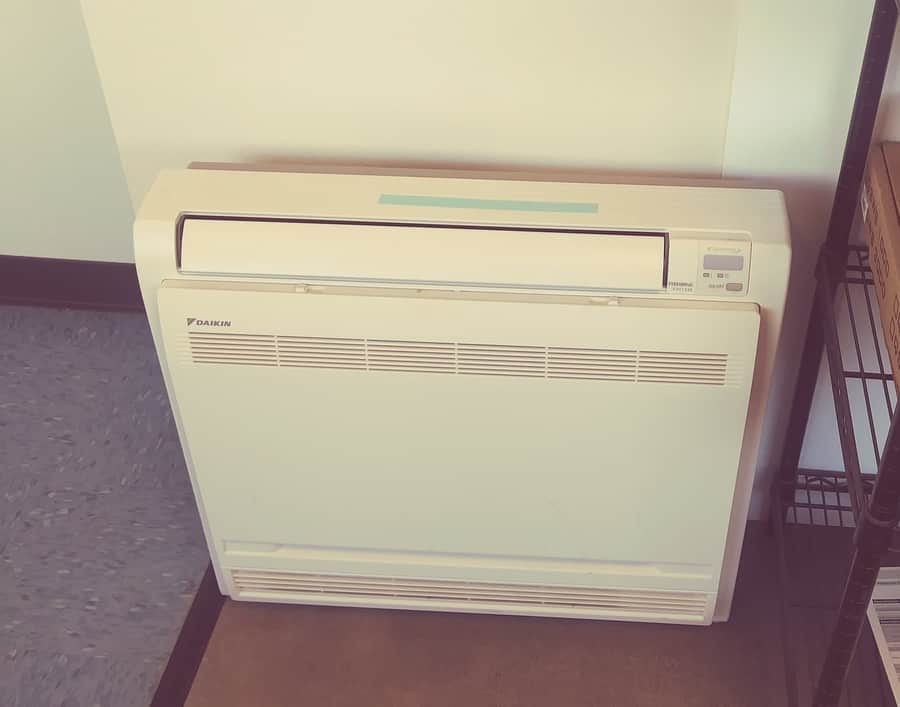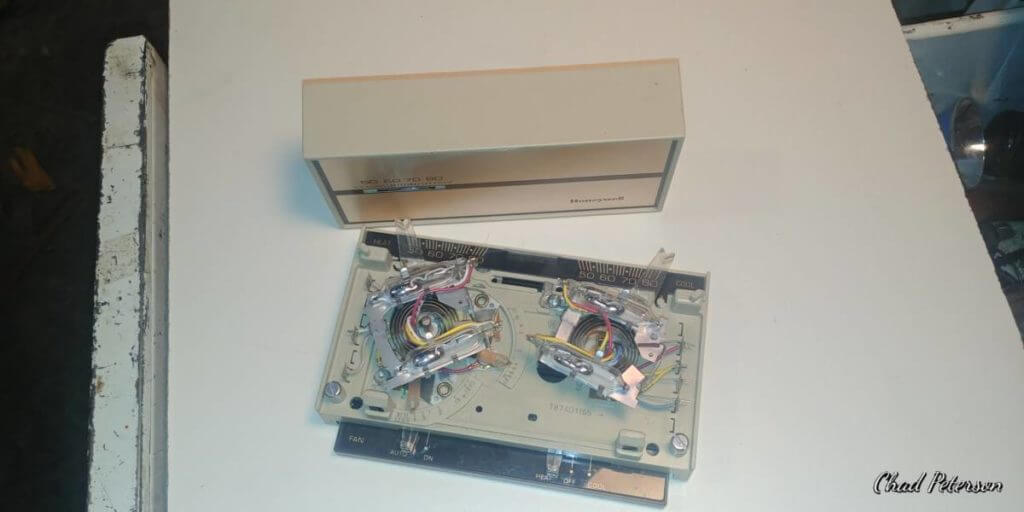Want to know what your heat pump backup options are? I’ve worked on, repaired, and installed just about all of them except for wood backup.
The best way to supplement or to know what your backup heat sources should be for a heat pump depends on your climate and utility prices. The simplest form of backup heat for an air to air heat pump is an electric furnace. Another good option would be dual fuel, my favorite.
If you have a heat pump with an electric furnace for backup, it’s not too late to convert to dual fuel. Warmer heat on those cold winter nights. Propane works great for those areas with no natural gas available.
The strip heat in an electric furnace can be staged to come on sequentially or all at once.
It’s important to get the job done. Continuous running can be expensive.
The best way to control heat pump heat strips is with a good digital thermostat. Don’t be intimidated by the digital aspect of a new heat pump control. The new ones are easy to read and simple to operate.
So, do you have the best backup heat source for your application? Why is the auxiliary heat coming on? And why is the auxiliary heat running too long? Let’s dig into these questions.
Electric backup heat will run simultaneously as a supplement with the compressor unit as a booster during very cold weather.
In really cold climates where electricity is expensive a dual fuel heat pump will work very well. Supplying warmer heat at the register.
During the really cold weather a dual fuel system will lock out the compressor and use just the gas furnace to heat the home.
Oil is becoming less and less of an option, in my area anyway. Fewer companies are offering to service oil furnaces. One of my local suppliers told me of one company that is still sort of specializing in oil. That’s to say nothing of the price fluctuations.
I have two water to air heat pumps in my own home. They are served by a well on the property. The water temperature from the well is a constant 55 degrees. The water coil takes the place of an outside unit.
The compressor is incorporated right inside the air handler with the fan and electric strip heaters.
I’ve never hooked up the strip heaters on the unit for the main floor. With a constant 55 degree water it never been necessary even in below zero temperatures.
It’s like having the outdoor weather at 55 degrees year around. I wish it were. It’s snowing as I write this.
I thought that little insight into water source heat pump might just make the backup heat question a little less confusing.
For a while my company was installing lots of dual fuel heat pumps using natural gas as the backup. Our gas company representative, who really flooded us with referrals, told me that if we continued to do that she would have to raise our customers rates.
They do work on a rate by number of appliances hooked to natural gas.
They were using less gas by heating with the heat pump during the fair weather days.
We complied. Because of the referrals. Years later things changed and the gas company became more stingy with referrals and the game was back on doing what was best for the customer.
What About A Heat Pump Without Auxiliary Backup Heat?
Just like my water source heat pumps, they live in a 55 degree environment. It’s a comfortable 55 degrees year around. If you live in a climate that never dips much below 40 degrees then maybe you wouldn’t need a backup source of heat.
The other name though for backup heat is emergency heat. It’s the same thing as backup or auxiliary heat only it’s used in a different manner. I wrote an article addressing auxiliary heat vs emergency heat. You can read it here.
You switch your thermostat to emergency heat and it turns on the strip heat in an electric furnace. You switch your thermostat to emergency heat with a dual fuel furnace and the natural gas or propane furnace comes on.
A very convenient feature in case something goes wrong with your outdoor unit. So not having backup heat would leave you in the cold when problems arise. I’ve been there.
Propane As Backup Or Auxiliary Heat
It’s a viable option especially where natural gas is not available obviously. The thing to remember about propane is the price. You can sometimes name your price if you buy your own tank.
Renting the tank will lock you in on the price offered by the tank owner. I’ve been there. My neighbor bought his own tanks and always beat me on price.
You can save quite a bit of money by purchasing your own propane tank. If you rent your tank you are subject to the price of propane from the company you rent the tank from. That’s the gimmick.
By owning your own propane tank, you can shop around and get the best price.
That makes the price for propane backup heat more advantageous.
Oil Backup, The Good Bad And The Smelly
Oil has been labeled as a non-renewable resource and prices change according to availability.
Like discussed, oil is a rapidly falling off as an option because of price and environmental concerns. Like propane you need an onsite tank. In many ways it’s a dirty fuel requiring maintenance from harder and harder to find technicians.
What About Auxiliary Heat For Ductless Or Mini Split Heat Pumps?

Codes will indicate the need for back up heaters to be installed or used when installing a mini split system. These backup heaters can be baseboard heater or Cadet heaters, sometimes referred to as tuck-in or wall heaters.
For smaller homes with a ductless heat pump the norm is to install one head or indoor unit in a common area and then let the wall heaters take care of supplement the bedrooms and bathrooms of the house.
Some Really Good Heat Pump Tips To Keep The Aux Ht Off
- Get a good smart thermostat with WiFi
- Keep the temperature setting as constant as possible
- Don’t over or under filter
- Keep coils clean
- Have regular maintenance
A really good smart stat with wifi has many advantages over the old mercury bulb stats of years ago. They govern the use of the auxiliary heat to the most optimum point of efficiency.

The old way was to have an outdoor thermostat that just said strip heat on when the outside temperature dipped below a certain temperature. So regardless of the heat pumps ability to heat the strip heat would come on a your meter would spin dramatically.
Smart stats are actually little computers than know when the outdoor heat pump unit can no longer keep up with the demand for heat and will turn on the auxiliary heat and get the job done.
Keeping your home at a more constant temperature will lessen the use of backup heat. Most resources will tell you not to turn down your heat at night more than about 5 degrees.
Turning down your heat more than a couple of degrees will more that likely cause your auxiliary heat to come on when you turn the thermostat back up and spin the electric meter again and again.
By over filtering I mean that some systems are not designed to overcome the resistance of a high efficiency filter. The best thing to do if you are considering a better filter is to have a static pressure test done. I wrote an article about what filter you should use in your furnace. You can read it here.
Keeping your coils clean is kind of an out of sight out of mind thing. People know very little about it’s importance until all of a sudden they don’t have any airflow or they loose an expensive compressor.
Many of my customers ask if they can just vacuum them off. The answer is generally no. Because dust and contaminates get past a filter they will accumulate on the heat pump coil that is in the furnace.
Looking at the fan motor and blower wheel can give you an idea of what the coil may look like.
Since the coil creates condensation in the summer the moisture mixes with the particles on the coil and even becomes embedded into the fins of the coil. A condition that will drastically reduce airflow.
These coil are best cleaned chemically.
That’s when regular maintenance is really required. It’s one thing you should ask you maintenance technician to do on a regular basis. Keep it clean because a clean machine is a thing of beauty.
I know that’s a stretch. I’m a car guy. Thanks for reading.

